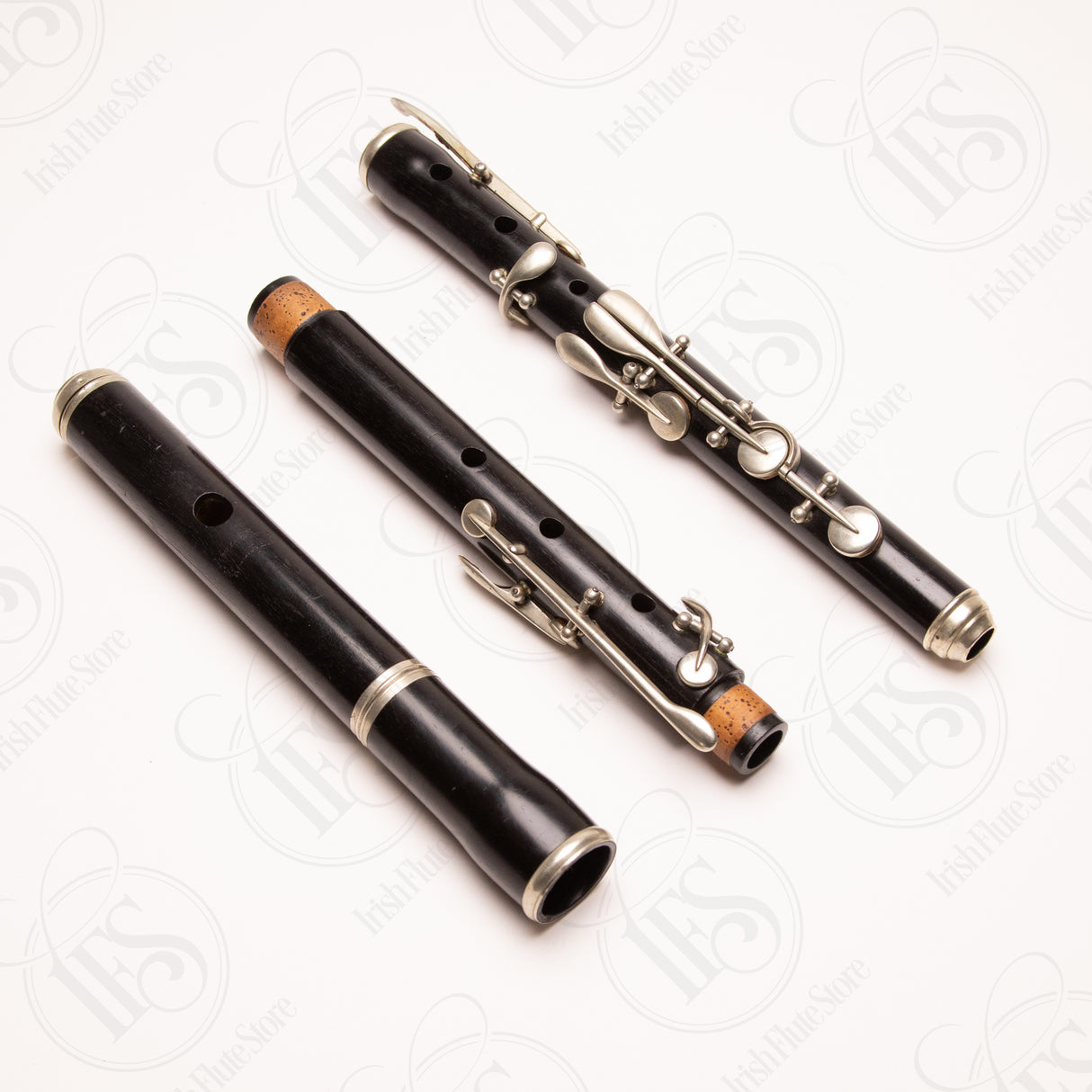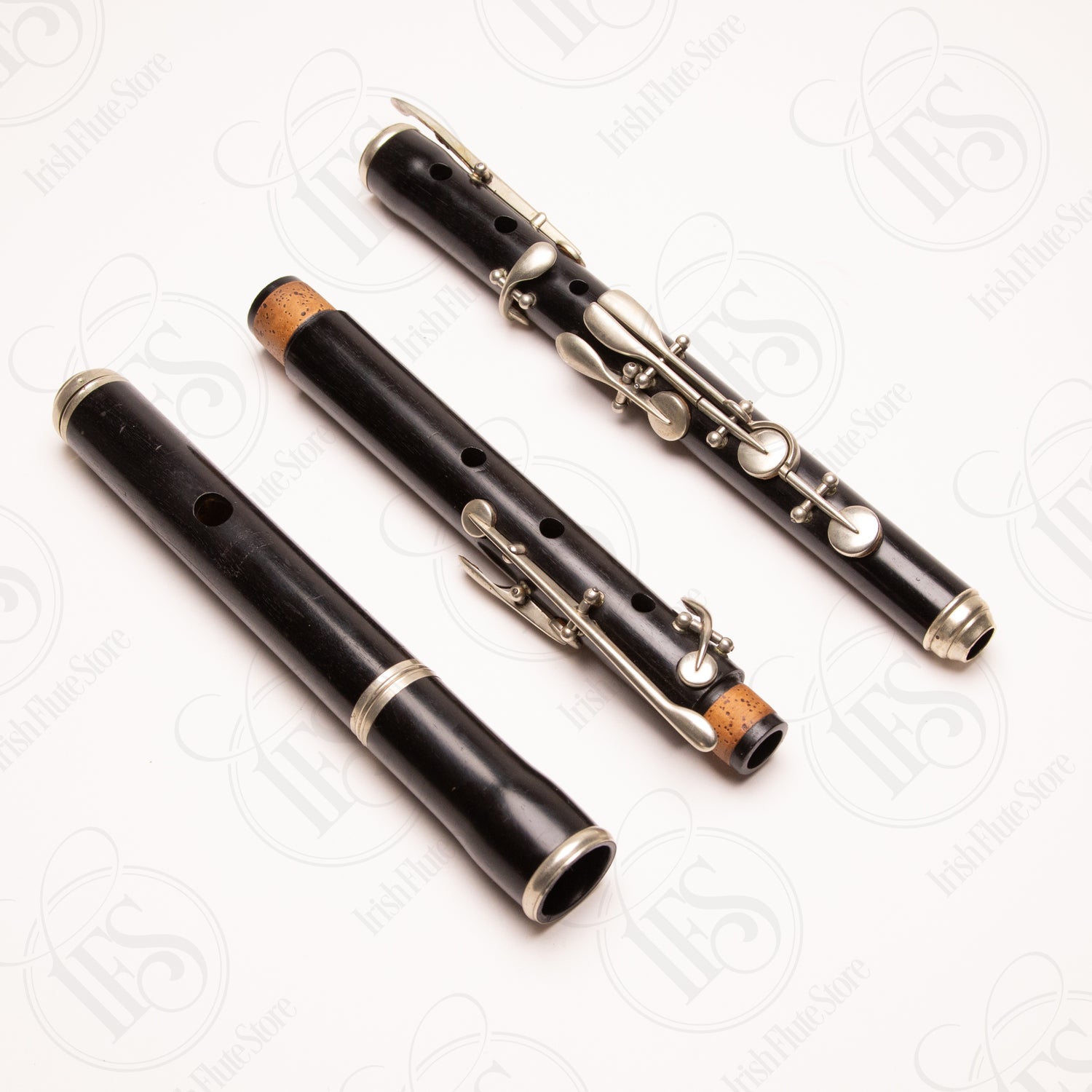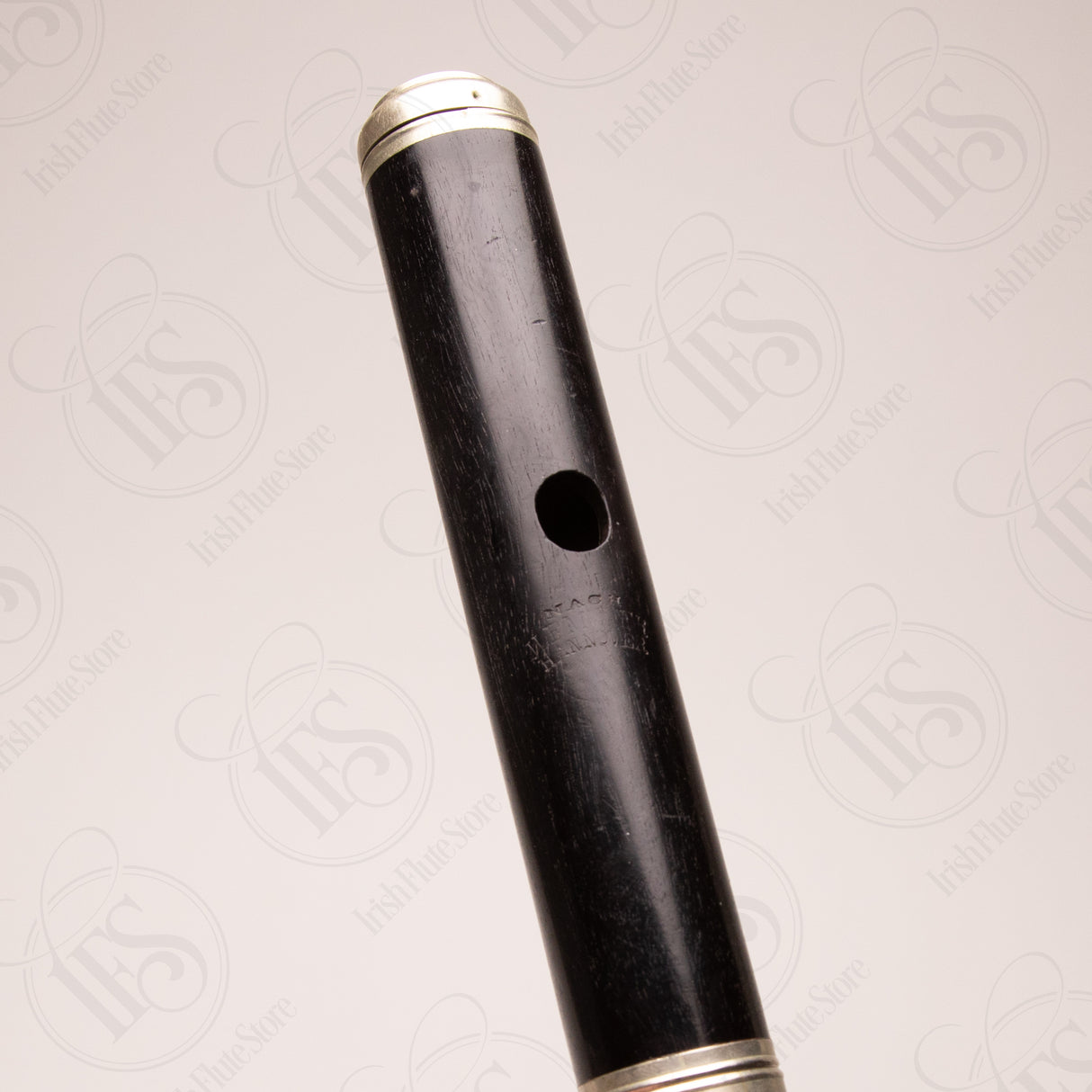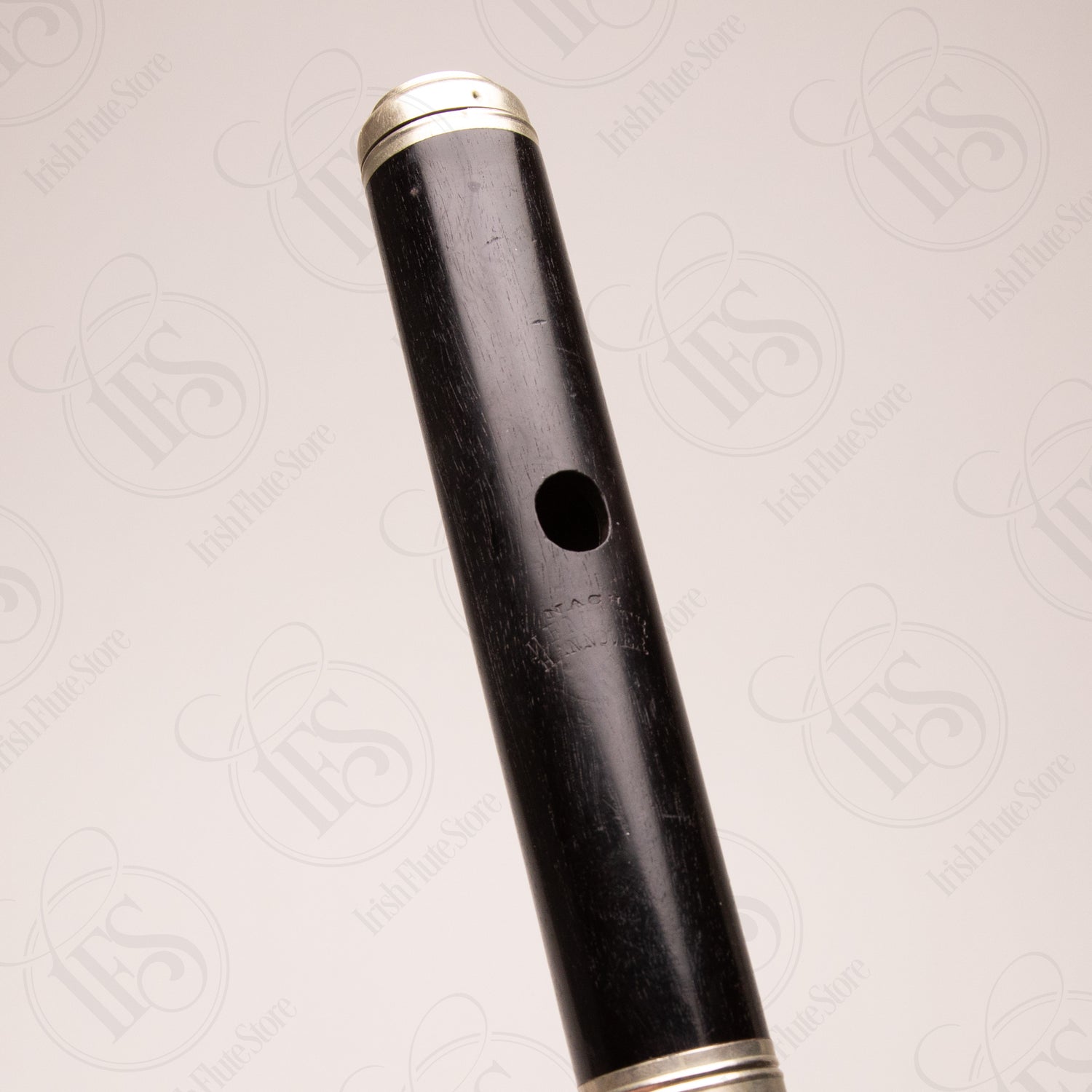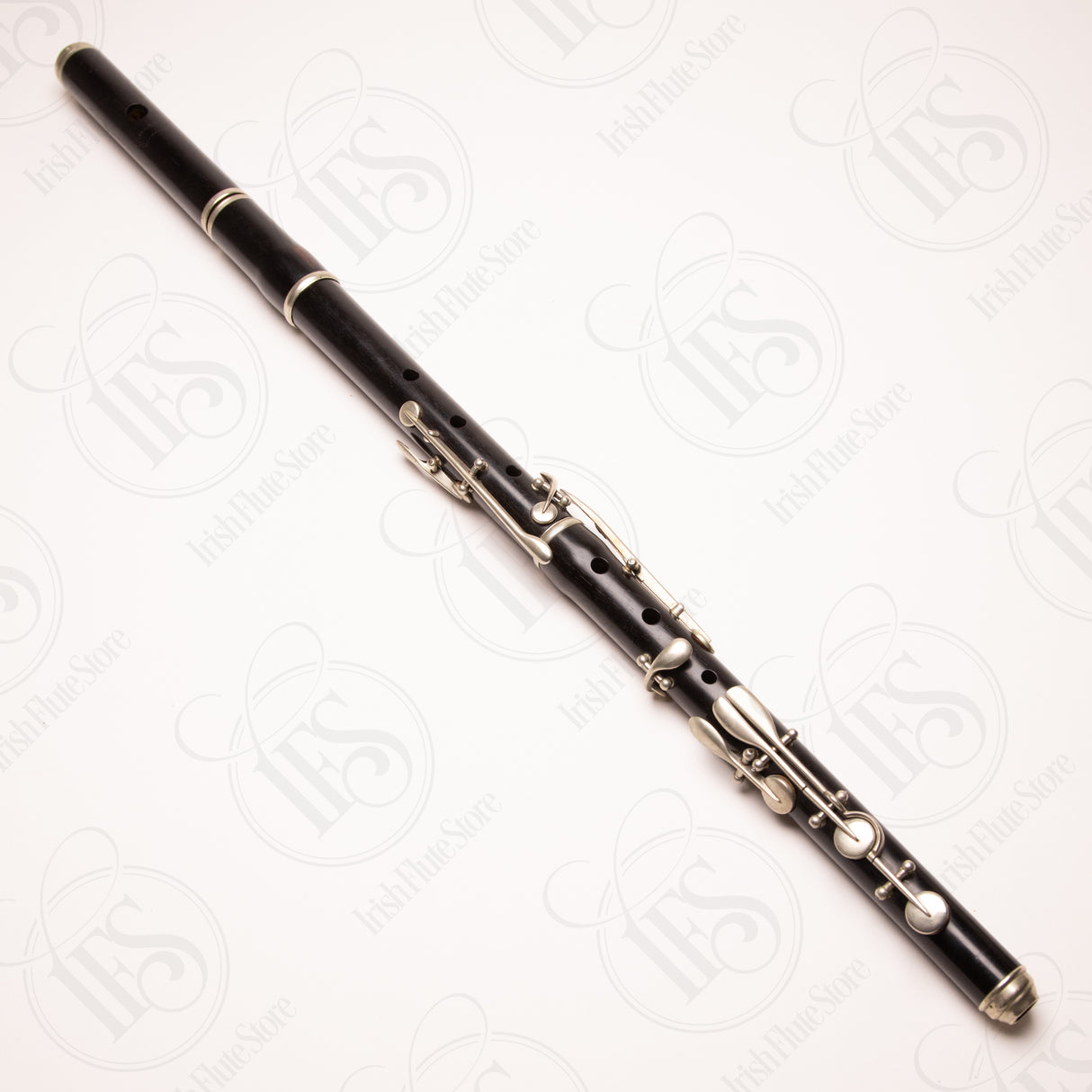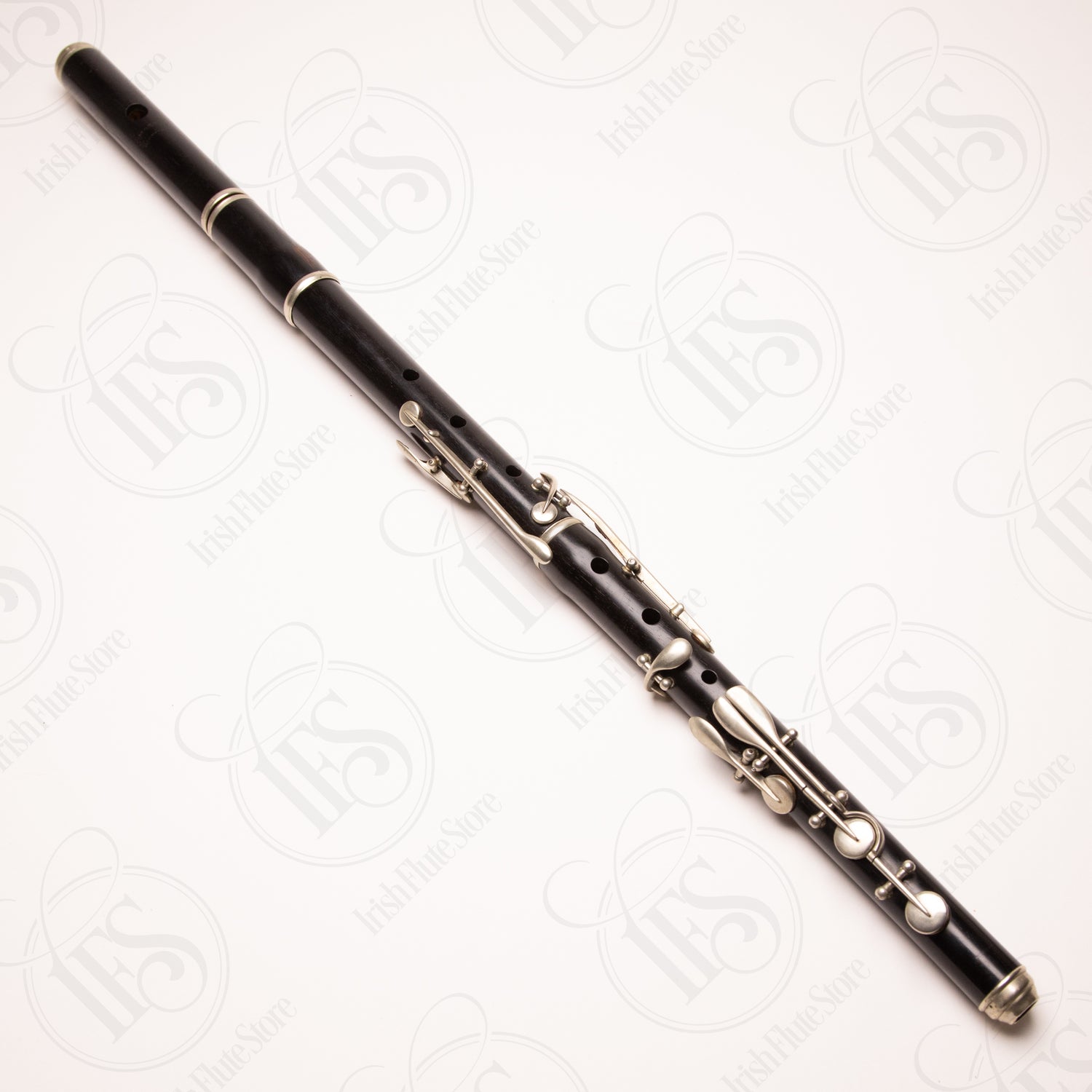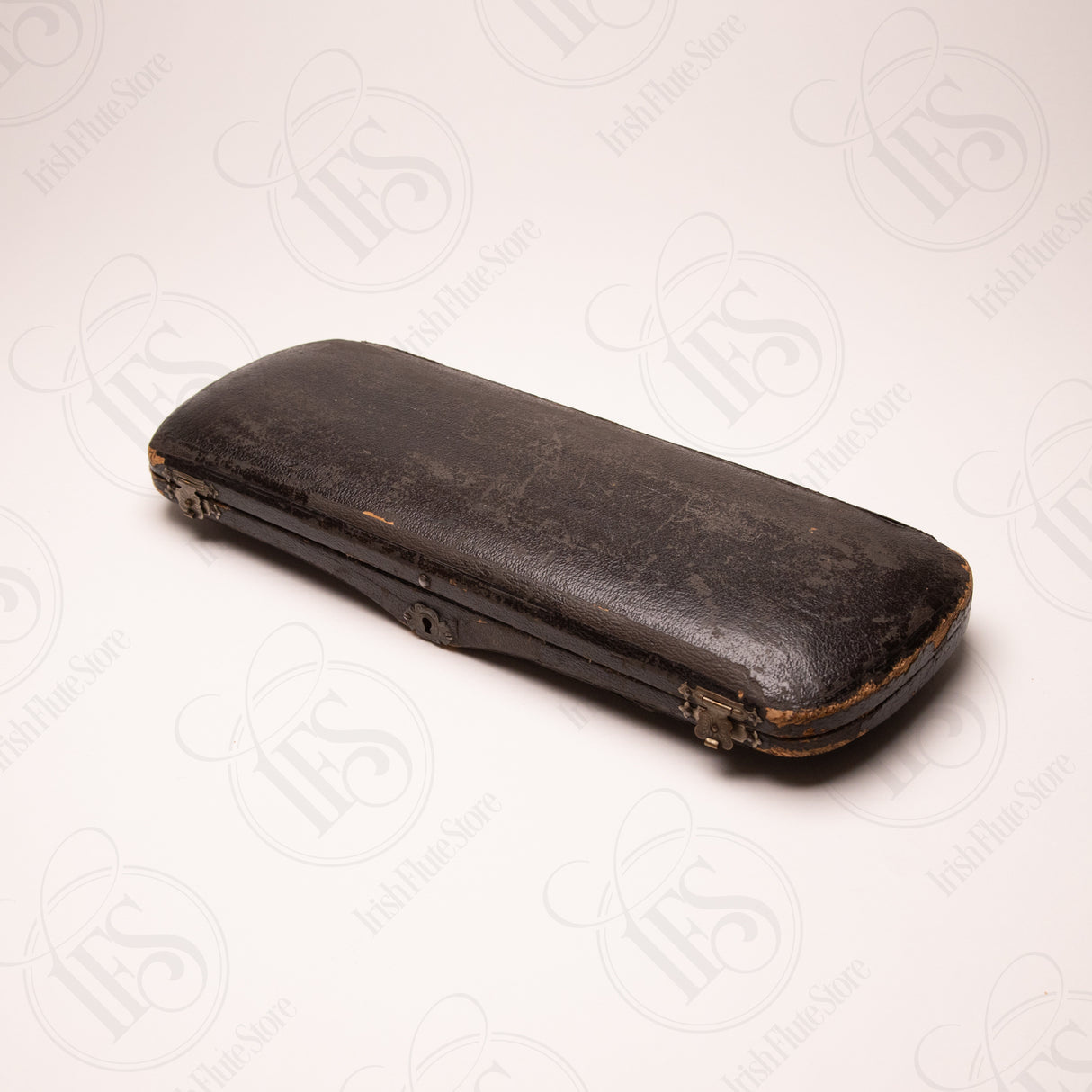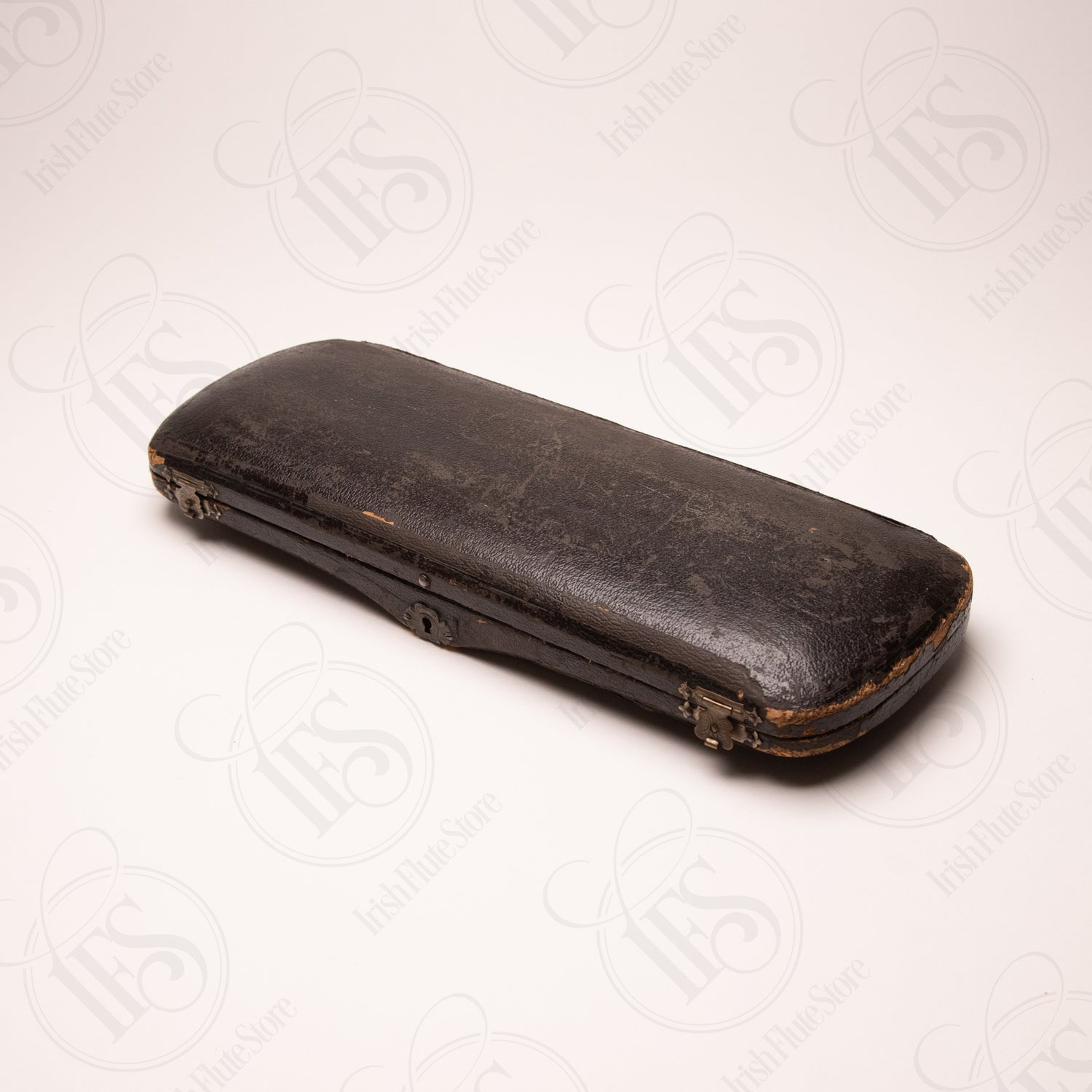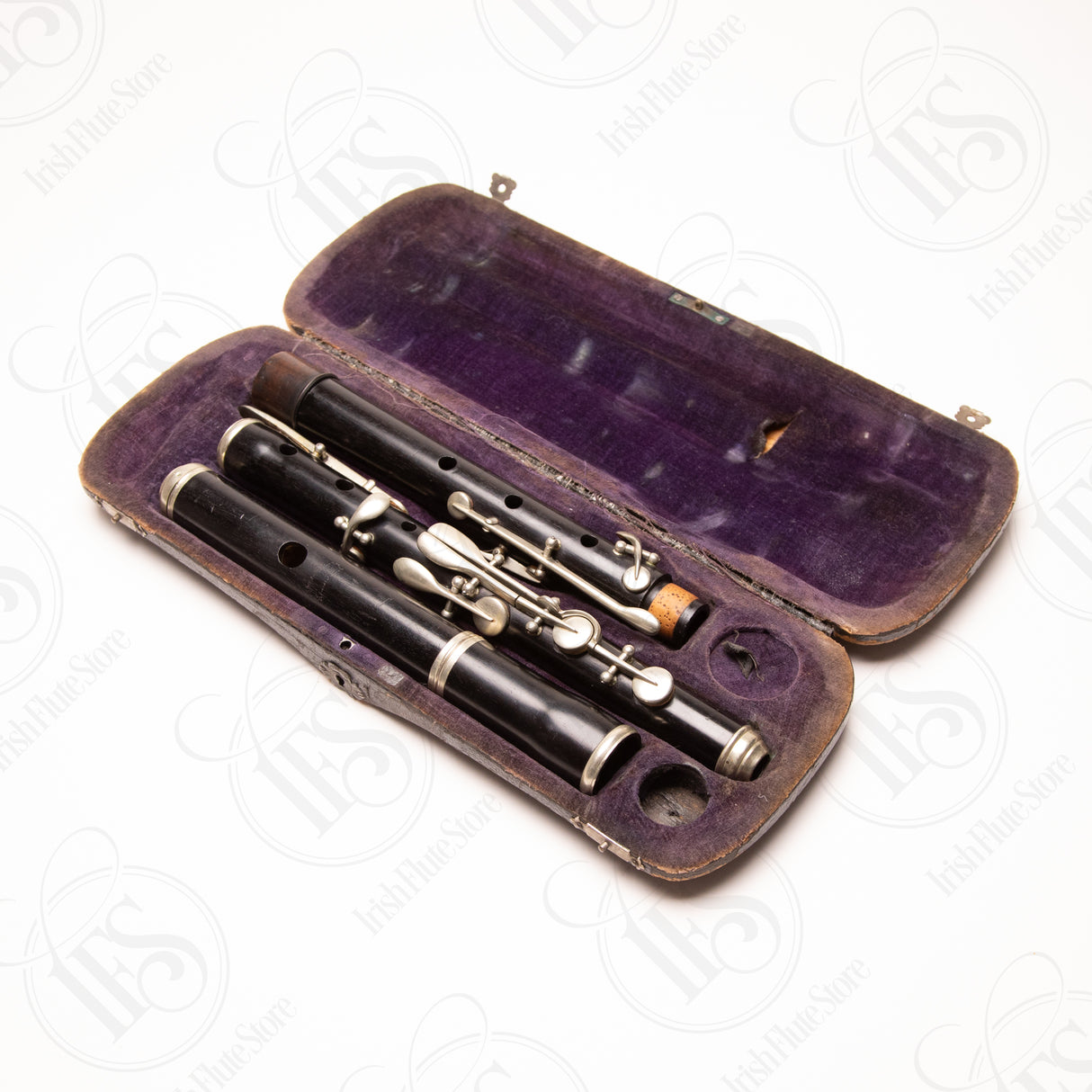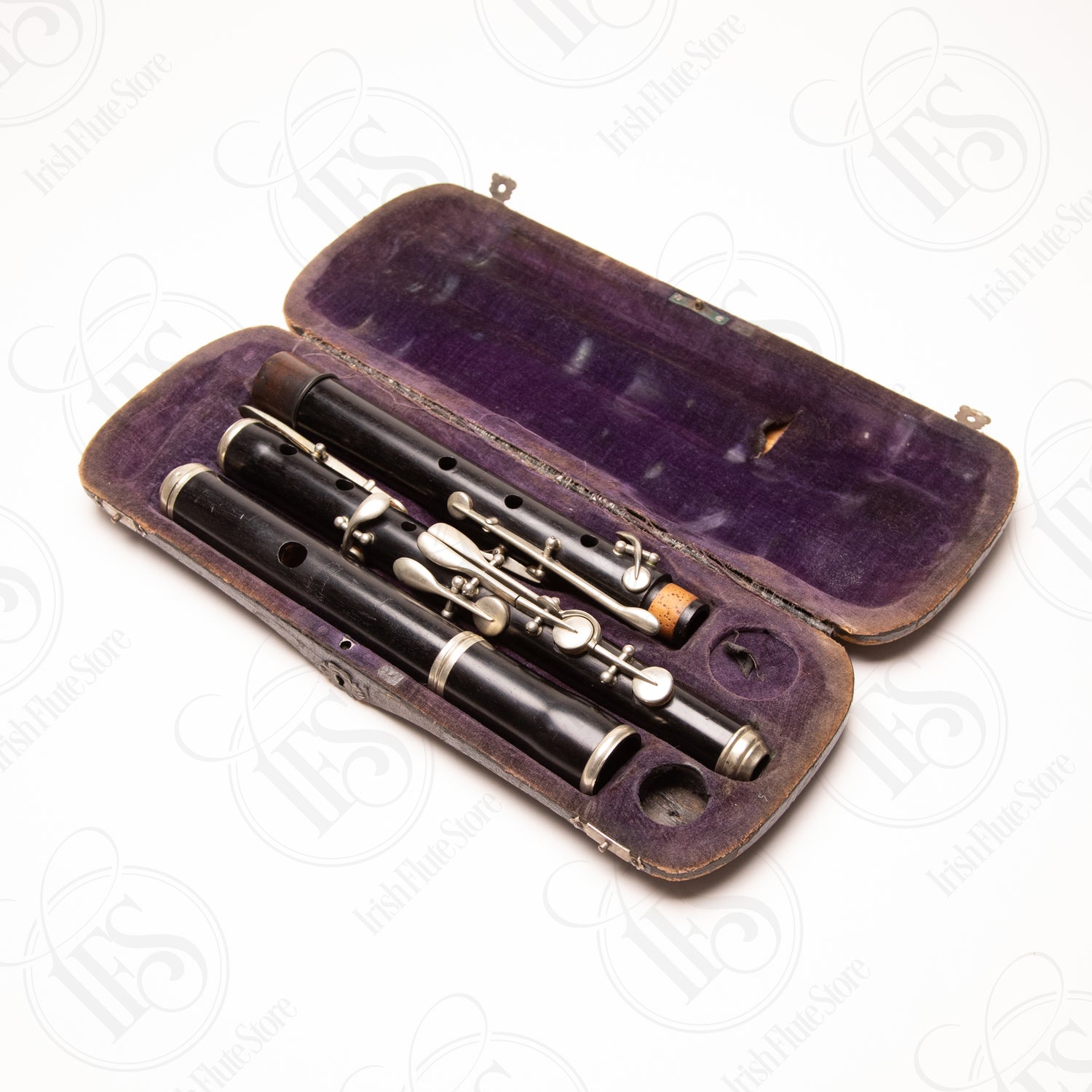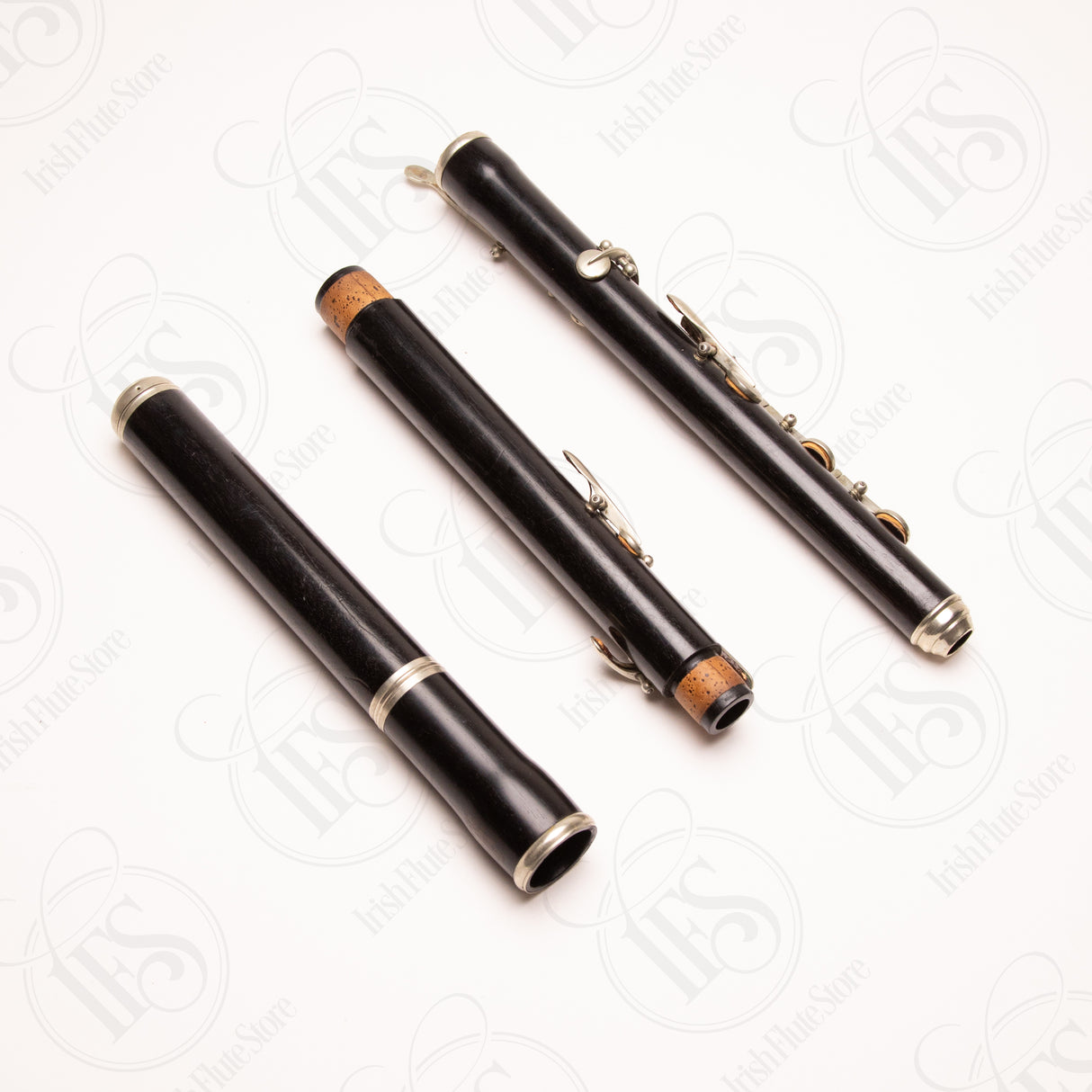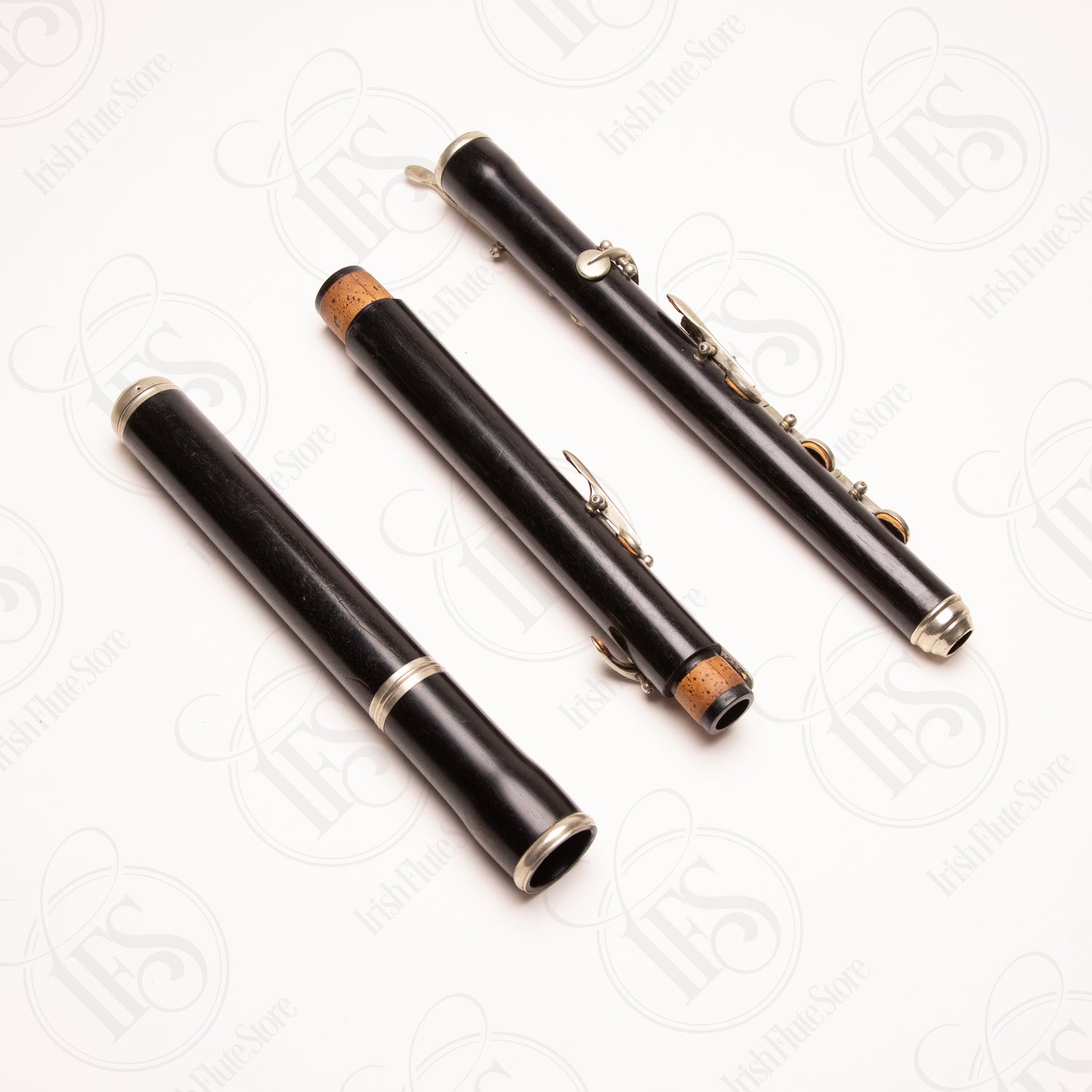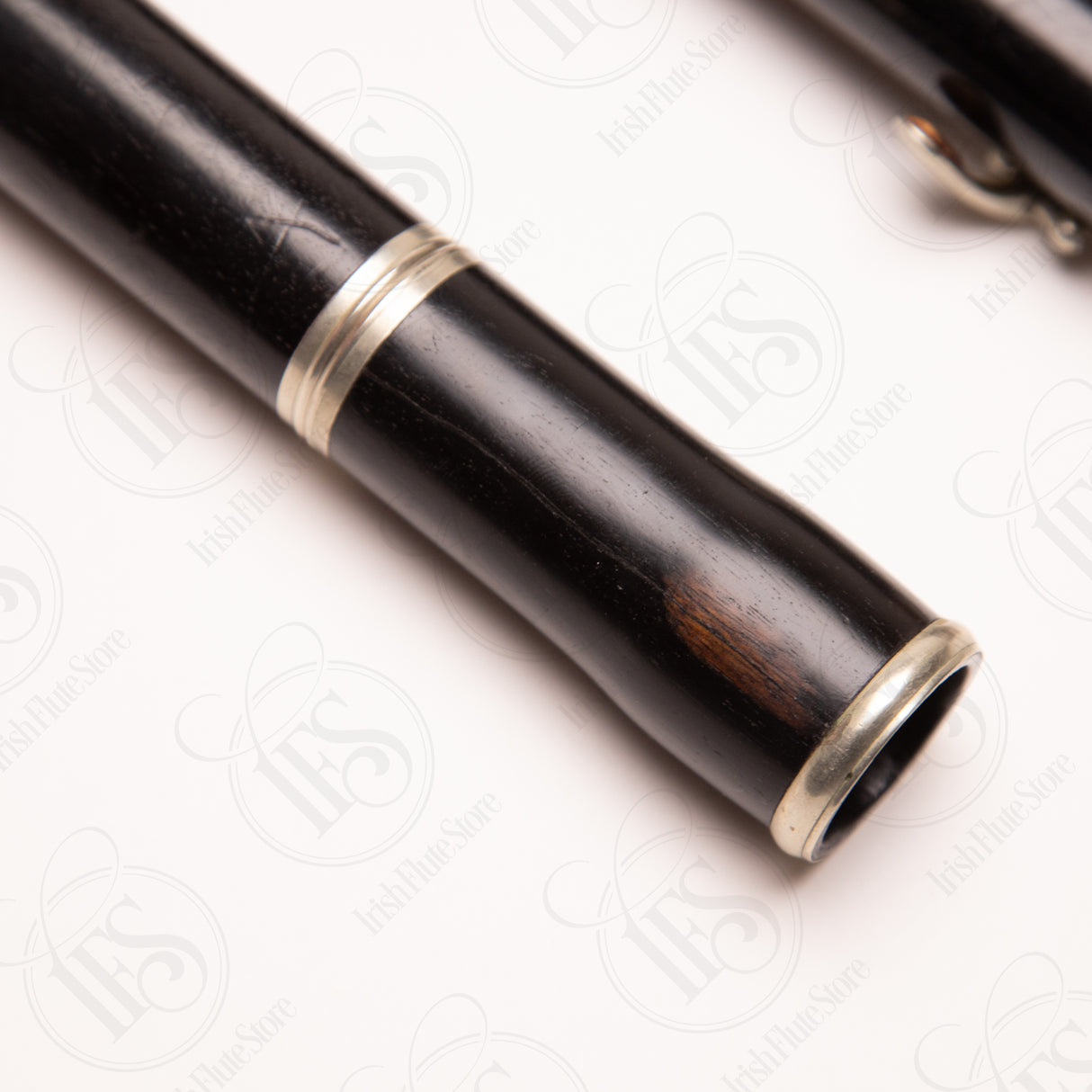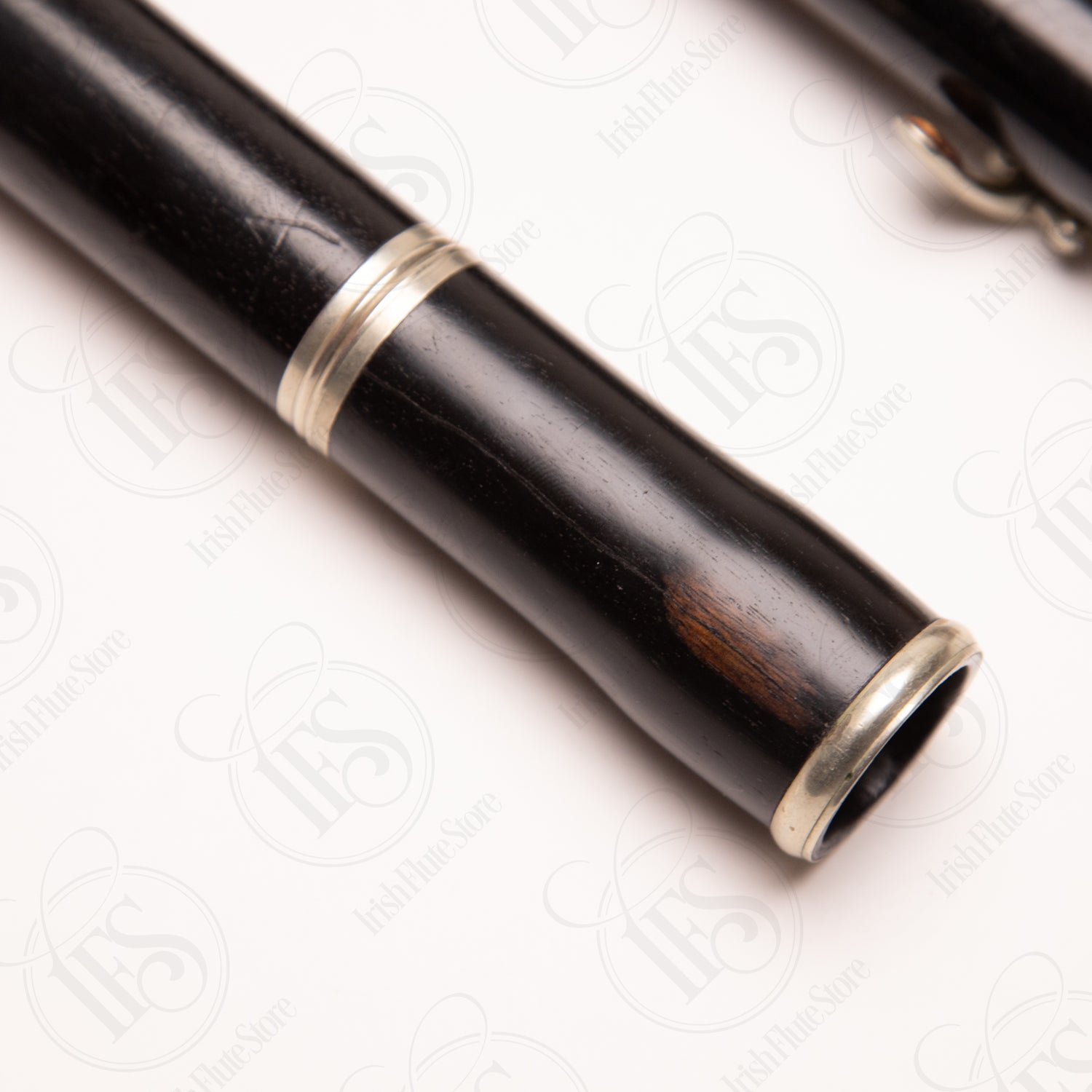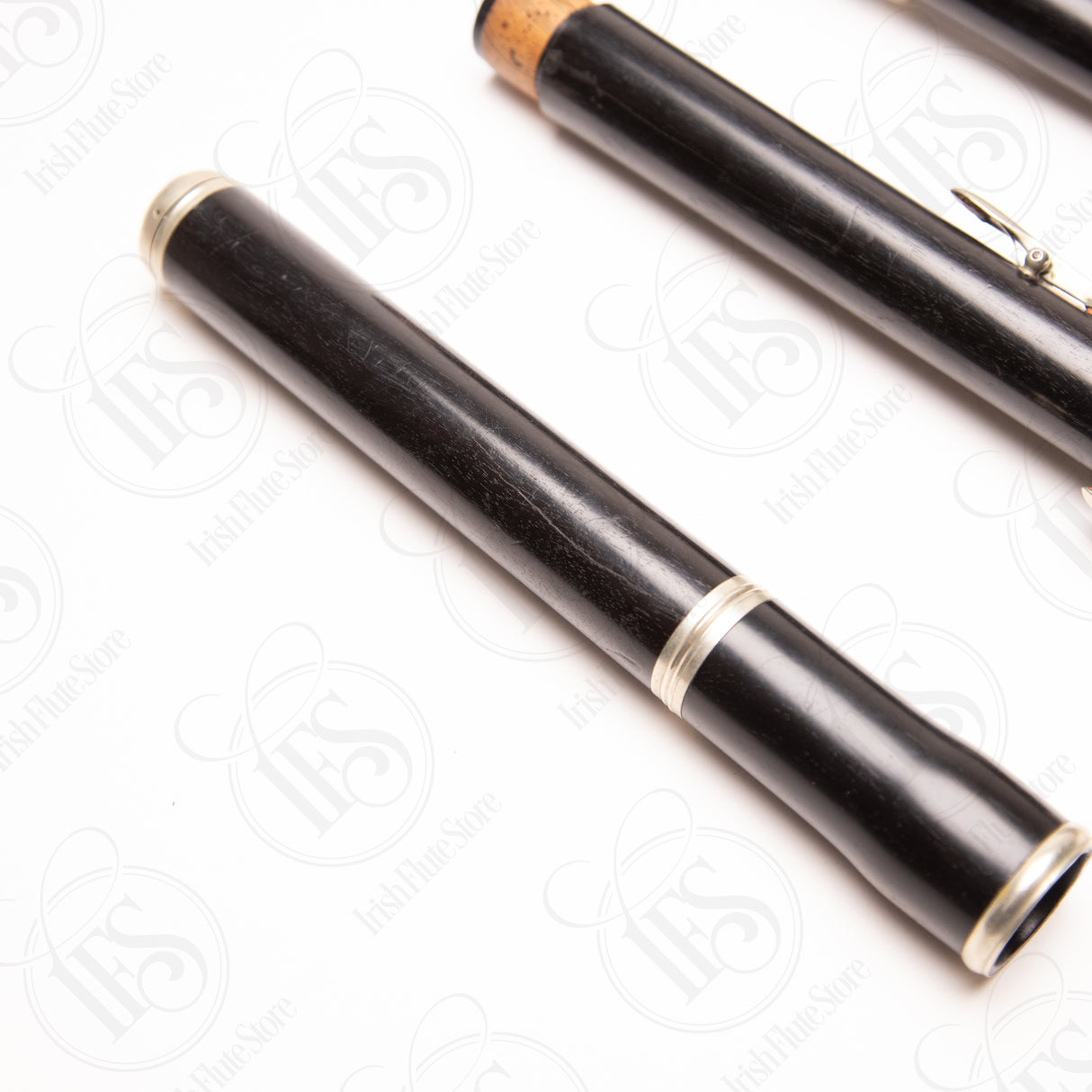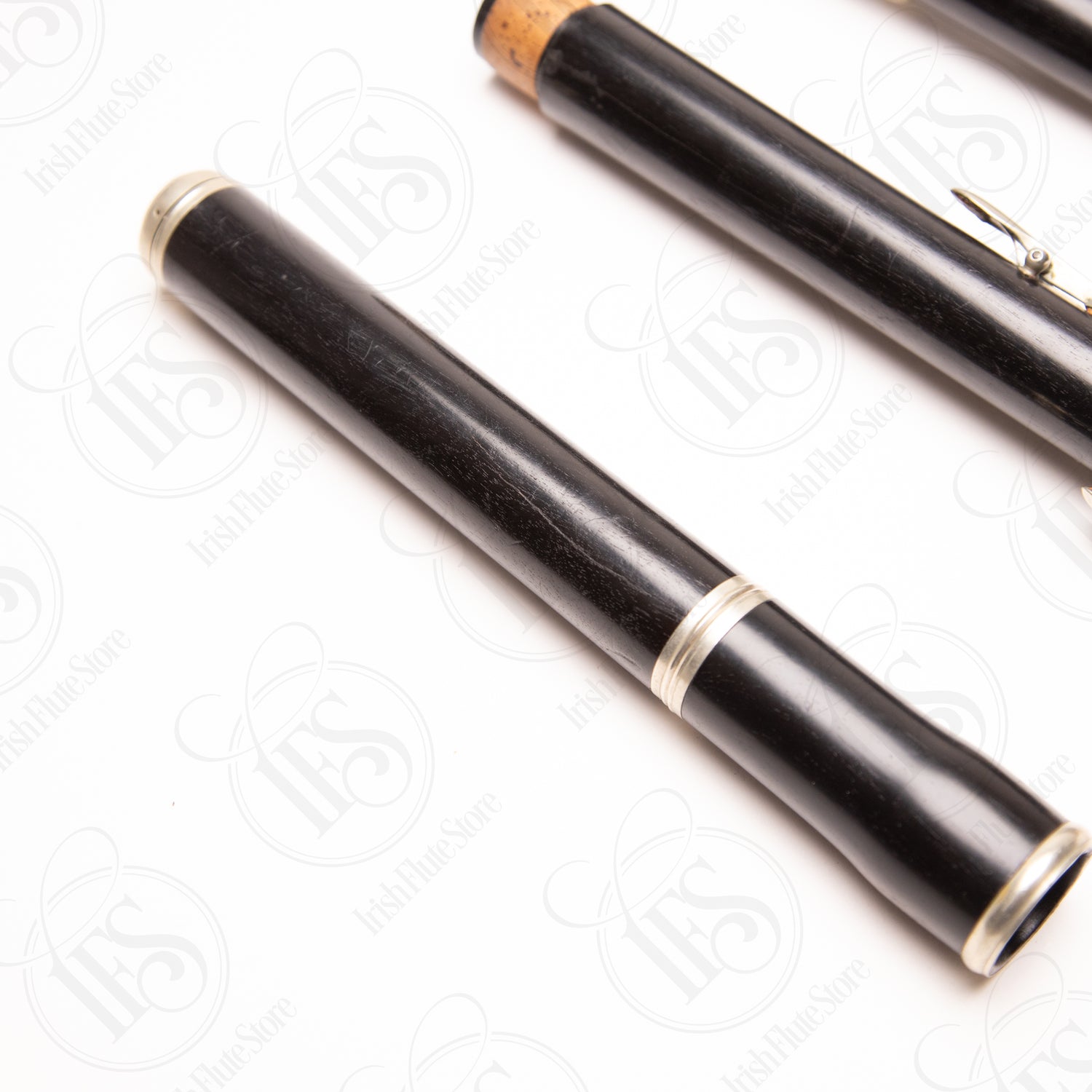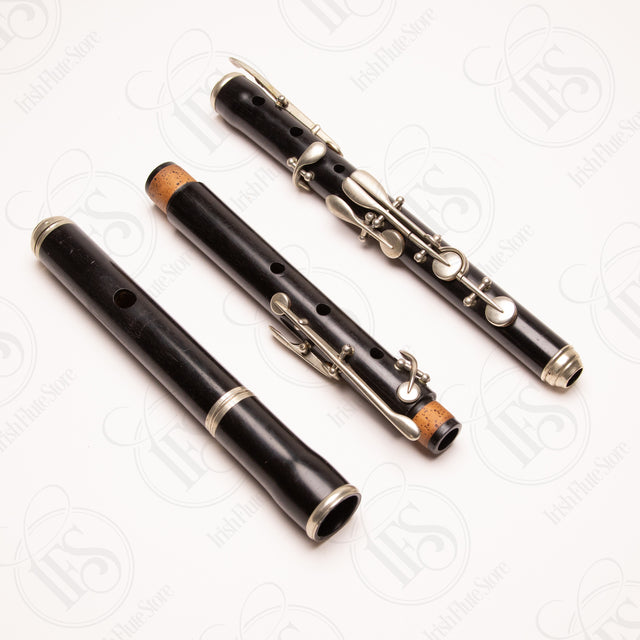This flute was played by a friend of the owner's father in a band during the 1930s. It's fully playable, with some light cleanup and minor pad work done by another friend. Includes the original case. Sold as-is, with a hairline crack in both the headjoint and barrel section that will need attention.
It’s pitched at approximately A=428 Hz — a "low pitch" standard often used in American and European civic bands and amateur music-making circles during the late 19th and early 20th centuries. While high-end orchestral flutes of the same era (such as those by Rudall & Rose) were often built at much higher pitches, band and parlor flutes like this one were typically made to lower tuning standards, blending well with other instruments of the time.
The design reflects the Nach Meyer tradition: flutes produced in Germany in the late 19th and early 20th centuries, modeled after earlier Viennese and English styles. ("Nach" meaning "after" in German — these flutes were made in the style of August Meyer, not by him directly.) They were widely exported, especially for the American market, favoring a slightly wider bore and a robust, flexible tone well suited to ensemble playing.
Flutes pitched at true A=428 Hz are relatively rare today — especially examples that remain playable — and are valued by players and collectors interested in historical repertoire and period performance practices.
Historical Note:
While fine English orchestral flutes of the 19th century were often built at high pitch (A=452–456 Hz), lower pitch standards like A=428 Hz were common among German-made band and parlor flutes intended for American and European civic ensembles during the late 19th and early 20th centuries.
Condition: Used - Fair
Condition: Details:

